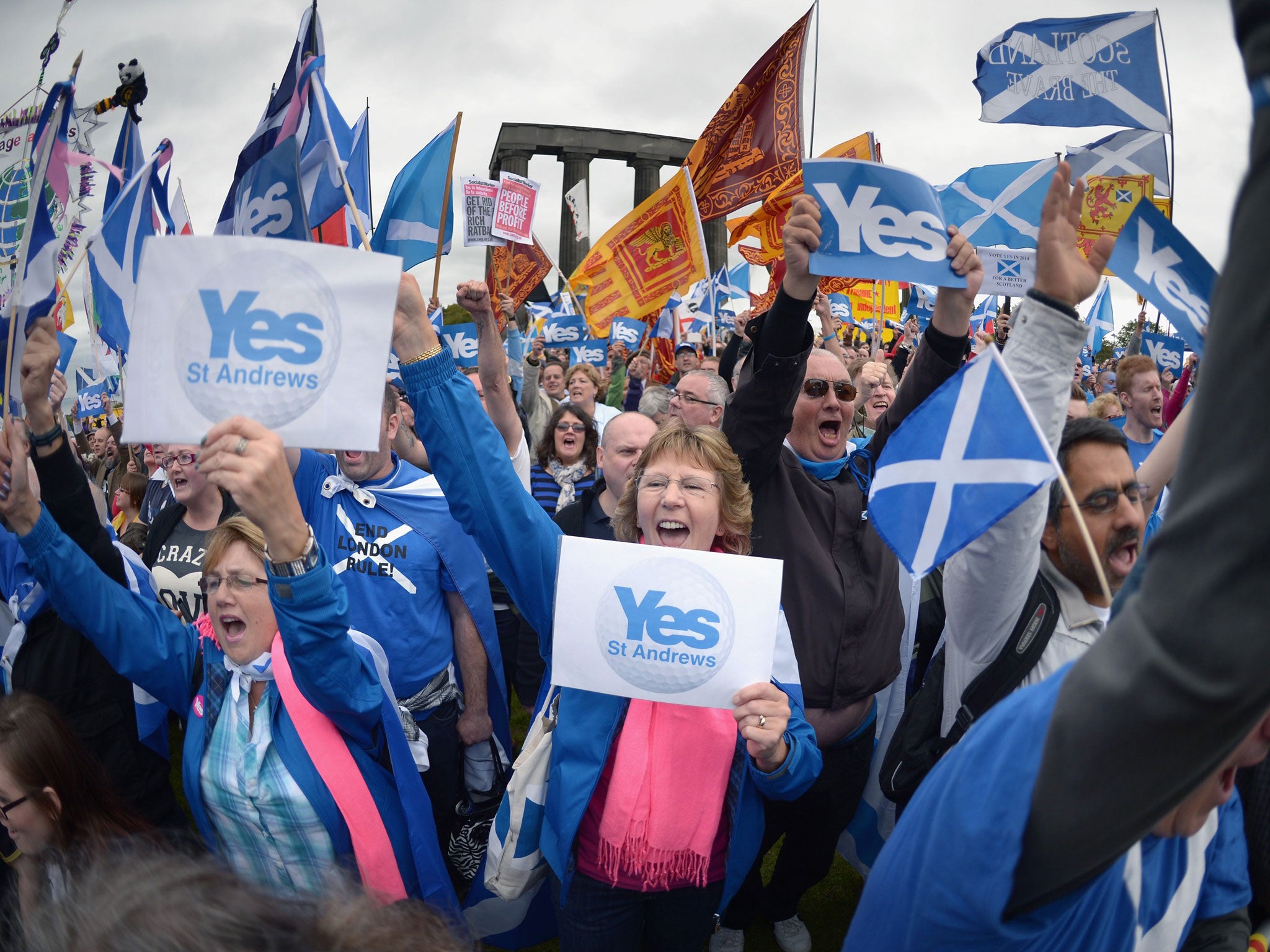Scottish independence: More austerity if independent Scotland is to balance books, says think-tank
Per capita public spending is currently 11 per cent higher in Scotland than in the rest of the UK

Your support helps us to tell the story
From reproductive rights to climate change to Big Tech, The Independent is on the ground when the story is developing. Whether it's investigating the financials of Elon Musk's pro-Trump PAC or producing our latest documentary, 'The A Word', which shines a light on the American women fighting for reproductive rights, we know how important it is to parse out the facts from the messaging.
At such a critical moment in US history, we need reporters on the ground. Your donation allows us to keep sending journalists to speak to both sides of the story.
The Independent is trusted by Americans across the entire political spectrum. And unlike many other quality news outlets, we choose not to lock Americans out of our reporting and analysis with paywalls. We believe quality journalism should be available to everyone, paid for by those who can afford it.
Your support makes all the difference.An independent Scotland would need to endure additional austerity in order to balance the new government’s books, according to a study by a respected economic think-tank.
The Institute for Fiscal Studies said on Monday that the size of an independent Scotland’s “fiscal gap” would be 1.9 per cent of its GDP, compared to 0.8 per cent for the UK as a whole. That would equate to around £3bn a year. Closing the gap would entail further spending cuts or tax rises beyond George Osborne’s present round of austerity in order to stabilise the new country’s finances.
By way of illustration, the IFS said that closing the gap could be achieved by increasing the basic rate of income tax in Scotland to 29 per cent, increasing VAT to 28 per cent, or cutting public spending by 8 per cent. “An independent Scotland would face even tougher choices than those faced by the UK over the longer term,” said Gemma Tetlow of the IFS, one of the report’s authors.
The findings are likely to sharpen the debate ahead of Scotland’s referendum on independence which will take place on 15 November 2014.
At the moment, public spending per head of the population in Scotland is around 11 per cent higher than in the rest of the UK, while taxation raises a similar amount per head. The difference could currently be offset by higher revenues from North Sea energy supplies, but the IFS also concluded that declining oil revenues and a more rapidly ageing population would put growing pressure on the public purse.
The think-tank said that the precise size of Scotland’s fiscal hole would depend on the share of the national debt it inherited from the UK, the interest rates it faced on that borrowing and the level of immigration. But even under the most optimistic assumptions, Scotland would likely face a steeper challenge than the rest of the UK, it added.
An independent Scotland’s national debt is projected to rise above 100 per cent of GDP by the early 2030s in the absence of further austerity. To bring the national debt down to 40 per cent of GDP over the next half-century would require £6bn of cuts (or 4.1 per cent of GDP) in the early part of the next decade.
However, the Scottish National Party’s Finance Minister John Swinney said the report “underlines the case” for independence and pointed to the uncertainties inherent in the IFS projections. “The whole point of independence is to equip Scotland with the competitive powers we need to make the most of our vast natural resources and human talent, and to follow a better path from the current Westminster system which stifles growth and which is responsible for the damaging economic decisions which this report –and its projections – are based on,” he said.
Overall spending on benefits per head is 2 per cent higher in Scotland than the UK as a whole, said the IFS. Disability benefit spending is 22 per cent higher. Spending on housing benefit, however, was 12 per cent lower because of cheaper rents in Scotland. The IFS said that the pattern of public spending in Scotland was “quite different from the rest of the UK”, noting that more is spent on capital-intensive areas such as housing.
The IFS added that independence would give Scotland an opportunity to design a “more efficient” tax system. But it pointed out that an independent Scotland would probably also be vulnerable to tax competition from the UK and cross-border shopping.
Join our commenting forum
Join thought-provoking conversations, follow other Independent readers and see their replies
Comments